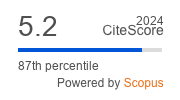Article | Open Access
Evaluations of the Spitzenkandidaten: The Role of Information and News Exposure in Citizens’ Preference Formation
| Views: | 6822 | | | Downloads: | 3342 |
Abstract: The 2014 European Parliament (EP) elections were characterised by a novel element in European Union (EU) politics. For the first time, the major European party families put forward top candidates for President of the European Commission, the so-called Spitzenkandidaten. This paper tests whether this innovation had the potential to—at least partially—alleviate the alleged accountability deficit. We rely on original survey data to assess citizens’ preferences for each of the main Spitzenkandidaten: Jean-Claude Juncker, Martin Schulz, and Guy Verhofstadt. Our research is guided by three questions: what explains whether citizens formulate a preference for a certain Spitzenkandidat? Which factors are responsible for variations in such preferences? And, are these explanations moderated by citizens’ political awareness? We show that three factors enable citizens to formulate a preference for the Spitzenkandidaten: news exposure, general EU political information, and campaign-specific information about the Spitzenkandidaten. Furthermore, we demonstrate that only the most knowledgeable citizens are able to use party cues in their evaluations of the Spitzenkandidaten. The implications of our findings are discussed with reference to the EU’s democratic deficit debate.
Keywords: candidate evaluations; European Parliament elections; European Union politics; personalization of politics; political behaviour
Published:
© Katjana Gattermann, Claes De Vreese, Wouter van der Brug. This is an open access article distributed under the terms of the Creative Commons Attribution 4.0 license (http://creativecommons.org/licenses/by/4.0), which permits any use, distribution, and reproduction of the work without further permission provided the original author(s) and source are credited.


